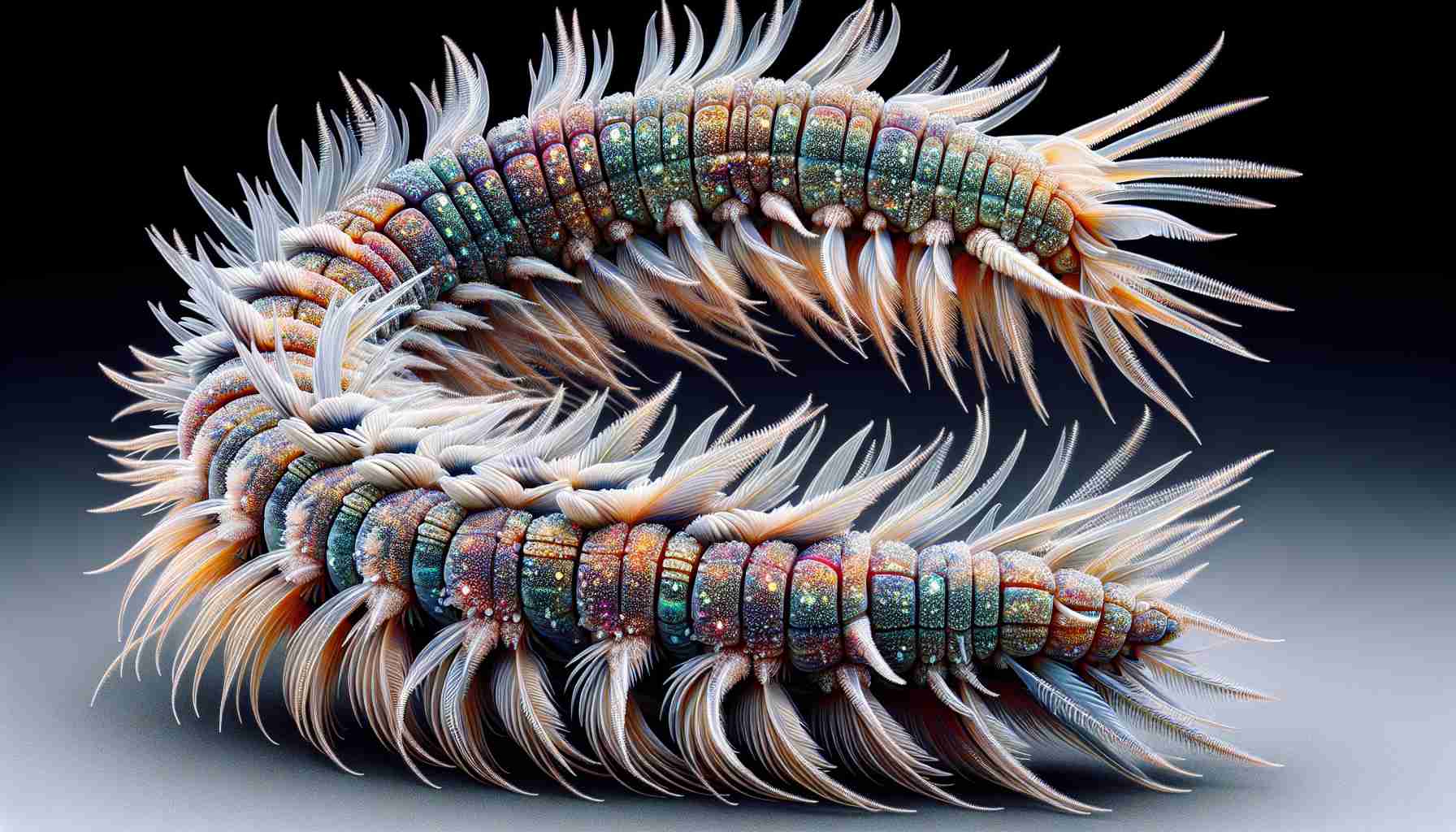- The Antarctic scale worm (Eulagisca gigantea) is a striking species found up to 1,640 feet beneath the Southern Ocean.
- It can grow up to 8 inches long and is notable for its jaw that can stretch nearly 3 inches wide, equipped with sharp teeth.
- This worm is part of a larger family of bristle worms, characterized by their segmented bodies and bristles.
- Antarctic scale worms are essential predators, playing a vital role in ocean ecosystems as hunters and recyclers.
- Despite being discovered in 1939, many aspects of their biology and ecological role remain unexplored.
Deep beneath the icy surface of Antarctica’s Southern Ocean lies a fascinating creature that appears more like a sci-fi nightmare than a harmless worm. Meet the Antarctic scale worm (Eulagisca gigantea), a shimmering golden marvel growing up to 8 inches long yet equipped with a mouth reminiscent of the dreaded xenomorph from Alien.
Living over 1,640 feet (500 meters) under the surface, these mesmerizing worms are cloaked in scales that resemble human teeth—making them both glamorous and gruesome. With over 8,000 relatives in the bristle worm family, Antarctic scale worms flaunt segmented bodies, each adorned with bristles that dance in the ocean currents. These golden hairs serve multiple purposes, from aiding in movement to potentially warding off threats.
But it’s what lies at their purplish tip that truly astounds. Beneath their retractable exterior hides a formidable jaw that stretches nearly 3 inches wide, armed with sharp teeth likely designed for aggressive hunting. While scientists are still unraveling the mysteries of their diet, it’s clear that these creatures are not just passive residents of the deep; they’re vital predators.
Although discovered back in 1939, much about this enigmatic species remains a mystery. Bristle worms play a crucial role in ocean ecosystems, acting as recyclers and builders of underwater habitats. The Antarctic scale worm, with its stunning yet fearsome appearance, is a striking reminder of the wonders—and horrors—that dwell in the depths of our oceans.
Dive into the mysteries of the deep and uncover more about these eerie yet essential oceanic inhabitants!
Unraveling the Mysteries of the Antarctic Scale Worm: The Ocean’s Golden Predator
Explore the Antarctic Scale Worm: Essential Insights and Facts
Deep within the icy grip of Antarctica’s Southern Ocean, the Antarctic scale worm (Eulagisca gigantea) captivates researchers and ocean enthusiasts alike. With a length of up to 8 inches, this creature is not just visually stunning but also plays a critical role in its ecosystem. Here’s a closer look at what makes this bizarre worm so significant and intriguing.
Key Features of the Antarctic Scale Worm
1. Color and Appearance: These worms shine with a golden hue and are covered in tooth-like scales that serve both a protective and aesthetic function.
2. Habitat and Depth: They thrive at depths over 1,640 feet (500 meters), showcasing their ability to survive in extreme conditions that are inhospitable to many species.
3. Anatomy and Hunting Mechanism: The Antarctic scale worm boasts a retractable jaw that can expand up to 3 inches, equipped with sharp teeth perfect for capturing prey.
Use Cases and Ecosystem Role
– Predators: As aggressive hunters, they maintain population control of other marine organisms, contributing to the ecological balance in their habitats.
– Bioindicators: Their presence can indicate the health of marine ecosystems. Monitoring their populations helps scientists assess the impacts of climate change and human activity in polar regions.
– Habitat Formation: By interacting with sediments and other organisms, they help shape underwater habitats, influencing the local ecosystem structure.
Potential Limitations and Challenges
– Vulnerability to Climate Change: Changes in ocean temperature and chemistry can threaten their survival.
– Limited Research: Much about their behaviors, reproduction, and interactions with other species remains under-studied, creating gaps in our understanding of their biology.
Pricing and Economic Relevance
Currently, there is no commercial viability for harvesting the Antarctic scale worm due to its remote habitat and ecological importance. Future studies could explore potential bioprospecting avenues (e.g., biopharmaceuticals) as advances in deep-sea exploration technology improve.
Trends and Innovations
Researchers are using advancements in underwater robotics and imaging technology to study these creatures more closely, revealing new insights into their behavior and role within their ecosystems.
Future Predictions
As oceanic research progresses, scientists expect to uncover more diverse relationships of the Antarctic scale worm within the marine food web, leading to potentially revolutionary insights into deep-sea biodiversity and conservation strategies.
Frequently Asked Questions
1. What do Antarctic scale worms eat?
Antarctic scale worms are believed to be carnivorous, preying on smaller marine organisms. Ongoing research aims to definitively identify their dietary habits.
2. How do these worms contribute to their ecosystem?
Their role as predators helps regulate marine population dynamics, and their interactions with sediment facilitate nutrient cycling in the ecosystem.
3. Are Antarctic scale worms at risk due to climate change?
Yes, as climate change affects ocean temperatures and ecosystems, species like the Antarctic scale worm might face habitat loss and other stressors that threaten their populations.
For more detailed information on oceanic life and marine ecosystems, visit Ocean.gov.












